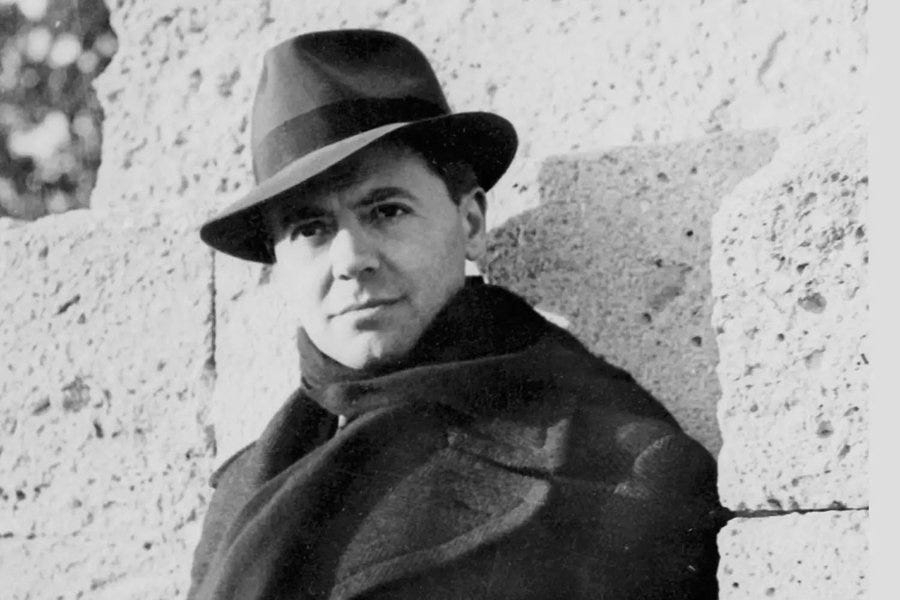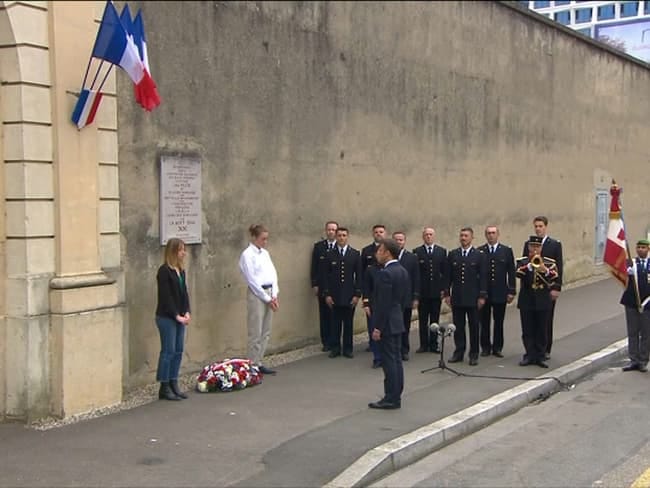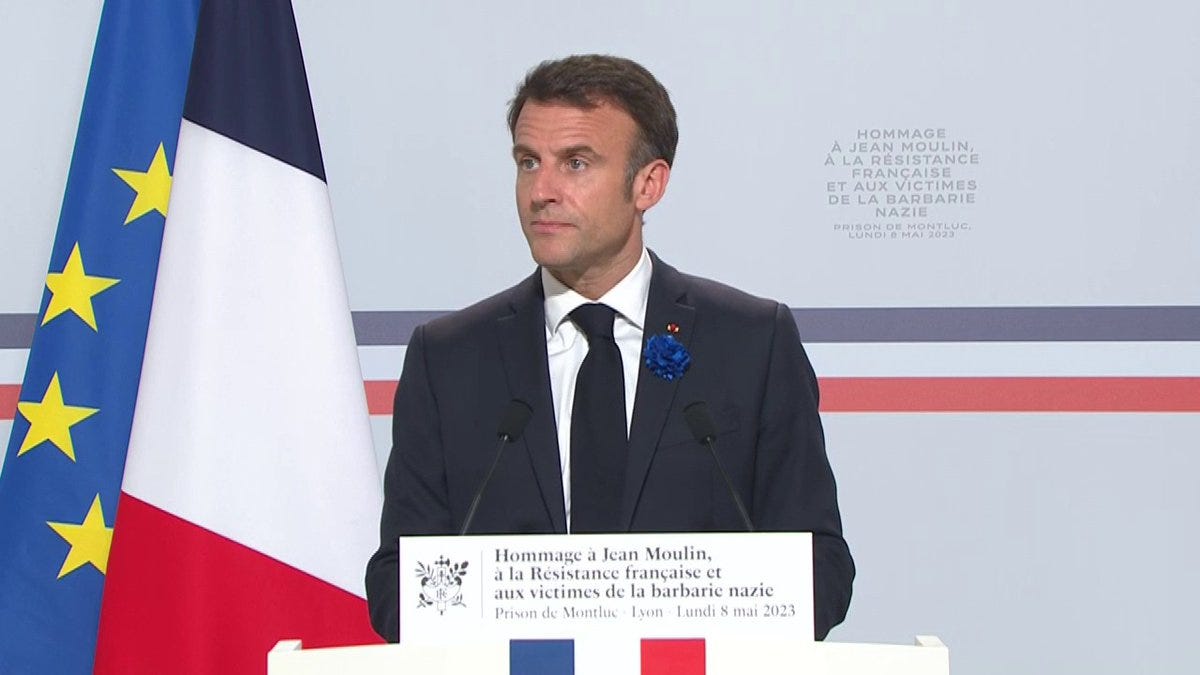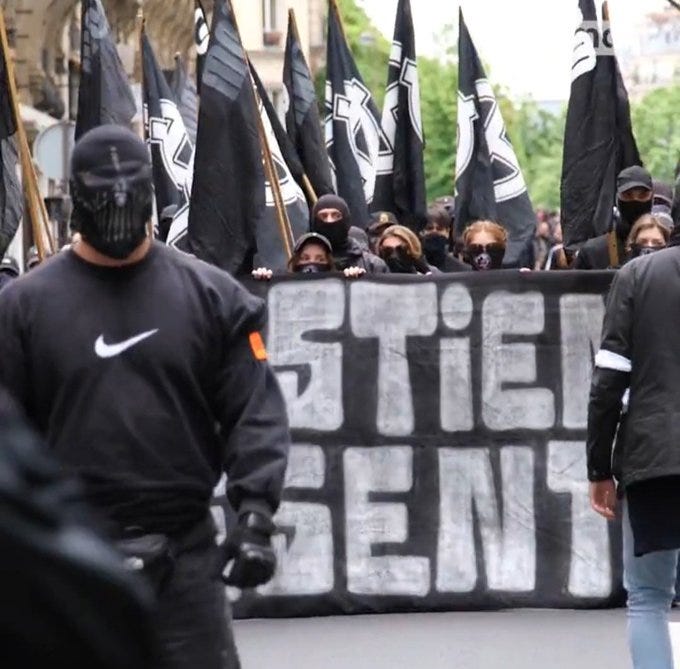Of Victory Day And Nazis Past And Present
Amid a tribute to a WWII hero, France continues to try to reconcile its history with current problems.
One of the fun facts about living in France is that there are approximately 132 public holidays in the month of May. Ok, it’s just 4 but it seems like a lot more.
Especially when you are a parent, and every day you turn around and there is an urchin underfoot who should by all rights be in school.
Even more bizarre is that two of the bank holidays are Catholic holidays that I bet most Catholics (outside of France) have no idea are even holidays. I was even an altar boy as a teenager, swinging the incense and wearing the robe and the whole bit, and a couple of these were total headscratchers. (Adding to the weirdness is the official embrace of Catholic holidays in a country that obsessively insists on Laïcete, the separation of church and state, but whatever I guess.)
On May 18, this majority Catholic country will celebrate Ascension Day which is the day when Jesus finally got around to leaving for Heaven and breaking up the band for good after doing one last farewell tour following the whole crucifixion-resurrection gig and letting the apostles jab their fingers in his wounds.
Of course, May 18 is a Thursday which means most French will take Friday off, or as it’s known here: faire le pont (make the bridge).
Then there is Pentecost on May 29 which celebrates when the Holy Spirit came down in the form of tongues of flames to anoint the apostles. That is a Sunday, so there is a bank holiday on Monday.
We already had Labor Day on May 1. And now today, May 8th, is Victory Day when the Allies accepted the surrender of Nazi Germany in 1945. For Europe, this marked the official end of World War II.
And more importantly, that means 5 days off from work this month in France.
Paying Tribute To Jean Moulin
As noted previously, the whole World War II thing is remembered in France with greater ambivalence than World War I. There is a reason that there is a World War I monument on every street corner in France because the French consider this to be the Good War that they won mostly on their own because they certainly didn’t lose it.
But with World War II, well, the French army got steamrolled at the start, and there was the Vichy regime which believed the democracy experiment had left the country weak and overrun by Commies, and the fact that some French rounded up Jews with more zeal than the Nazis.
So, it’s awkward.
But, there was the Glorious Resistance, which, even if it’s over-mythologized, remains a huge point of pride. And when one talks about the Resistance, there was no bigger hero than Jean Moulin.
Moulin was a regional government official and active in leftist politics. He was arrested early in the war when he refused to falsely denounce someone and tried to kill himself by slashing his throat. It left a scar he would hide by wearing a trademark scarf.
Later, he managed to sneak out of the country and meet with General Charles de Gaulle in London who appointed him the task of uniting various resistance groups and organizing a national resistance. Moulin parachuted back into the country and eventually created Conseil National De La Resistance.
In short, the dude was a badass.
Alas, on 21 June 1943, he was arrested in a suburb of Lyon and placed in the Montluc Prison where he was under the supervision of the notorious Klaus Barbie, the Butcher of Lyon. There are Nazis, and then there is Barbie, a sadistic sicko who delighted in using extreme methods of torture on men, women, and children alike.
Indeed, Barbie was so hideous that the only job he could get after the war was…working for the United States government. But that’s another awful story.
According to the Jewish Virtual Library:
Jean Moulin was mercilessly tortured by Klaus Barbie and his men. Hot needles were shoved under his fingernails. His fingers were forced through the narrow space between the hinges of a door and a wall and then the door was repeatedly slammed until the knuckles broke.
Screw-levered handcuffs were placed on Moulin and tightened until they bit through his flesh and broke through the bones of his wrists. He would not talk. He was whipped. He was beaten until his face was an unrecognizable pulp. A fellow prisoner, Christian Pineau, later described the resistance leader as “unconscious, his eyes dug in as though they had been punched through his head. An ugly blue wound scarred his temple. A mute rattle came out of his swollen lips.”
Jean Moulin remained in this coma when he was shown to other resistance leaders who were being interrogated at Gestapo headquarters. Barbie had ordered Moulin put on display in an office. His unconscious form sprawled on a chaise lounge. His face was yellow, his breathing heavy, his head swathed in bandages. It was the last time Moulin was seen alive.
To mark Victory Day, President Emmanuel Macron traveled to Lyon to pay tribute to Moulin.
After making the traditional stop in Paris at the Arc de Triomphe in the morning, Macron left for Lyon where he listened to 2 high school students tell the story of 44 Jewish children who were rounded up near Lyon and deported by the Nazis in April 1944.
That was followed by a visit to Montluc prison, where he was accompanied by Claude Bloch, 94, one of the last living survivors of the Nazi-run prison. They stopped at the cell where Barbie was placed after finally being arrested and convicted of crimes against humanity in 1987.
“Jean Moulin was a child of the Republic, servant of the state, soldier of France,” Macron said. He "had the intimate, ineradicable certainty that the France in which he believed would be victorious, that others if not him would reap the fruits.”
Macron also remembered the many others who were also imprisoned and tortured.
“Between February 17, 1943 and August 24, 1944, nearly 10,000 were thrown into these 4 m2 cells. Because they had chosen to resist, because they were Jews. Only 3,000 survived.”
Springtime For Nazis
Macron’s visit created plenty of other drama. Worried about protestors, the government banned demonstrations along the Avenue des Champs-Élysées in Paris and in many parts of Lyon. Officials wanted to avoid scenes of protestors confronting Macron over the controversial retirement reform.
Which, ok but banning protests by a democratic government is never the best look on a day when you are celebrating the defeat of Fascism.
Even worse: On Saturday, the local Paris legal representative of the national government (préfet) allowed a group of 500 Neo Nazis to march through the city. (Observation: It seems like these folks are totally fine wearing masks when it suits them!)
Officially, the march was to commemorate the death of Sébastien Deyzieu, who was participating in a Neo-Nazi protest in 1994 that had been prohibited by law enforcement. When police came to break it up, Deyzieu tried to escape by climbing the side of a building but fell to his death. Thus becoming a martyr to the cause.
Critics were infuriated the préfet allowed the Saturday much to occur. Paris Senator David Assouline demanded on Twitter that Interior Minister Gérald Darmanin explain how this was allowed to go down:
“It is unacceptable to have let 500 neo-Nazis and fascists parade through the heart of Paris yesterday. Their organizations, the manifestation of their ideology, slogans, insignia, are as many insults to the dead as provocations to racial hatred. Explain yourself !”
In a letter, the Paris Préfet responded they had little choice because a court in January had overturned attempts to block another far-right rally.
“In France, a demonstration can only be banned if there is a proven risk of disturbing public order,” read the response. “Last January, the decree prohibiting an ultra-right demonstration in Paris was suspended by the administrative judge.”
While that may be legally correct, it has left the government having to explain why protestors banging pots and pans at the president pose a greater risk to public order than people preaching racial hatred.
In other words, it’s awkward.
Le Pecq
Chris O’Brien






